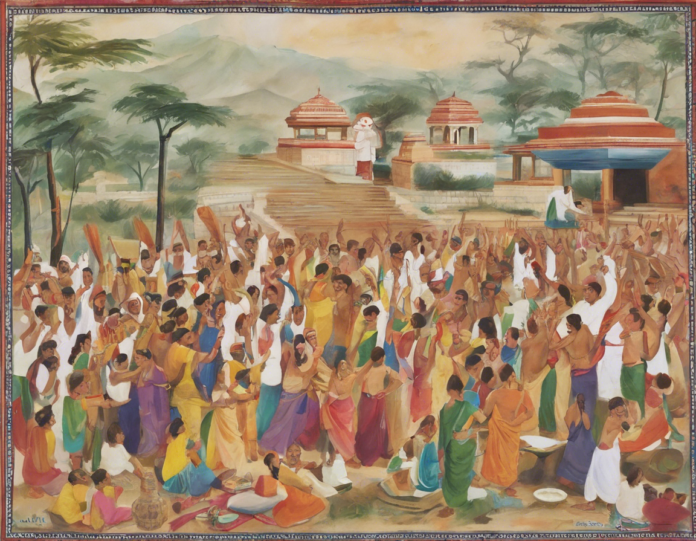Introduction
In the decentralized system of governance in India, Panchayats play a significant role in the administration of rural areas. The term Panchayat, derived from Sanskrit, means ‘assembly’ (yat) of five (panch), referring to a council of elected representatives at the village level. These grassroots institutions act as a bridge between the government and local communities, empowering villagers to participate in decision-making processes that affect their daily lives. This blog post delves into the power and role of Panchayats in rural India, elucidating their structure, functions, challenges, and impact on local development.
Structure of Panchayats
Panchayats in India are established under the 73rd Amendment to the Constitution, which mandates a three-tier system of local self-government in rural areas. The hierarchy consists of:
Gram Panchayat: At the village level, responsible for governing a single village or a group of villages.
Panchayat Samiti (Block Panchayat or Mandal Parishad): At the intermediate level, overseeing a group of Gram Panchayats.
Zila Parishad: At the district level, coordinating and monitoring the functioning of Panchayat Samitis.
Each tier has members elected through direct elections from the local community, with reservations for Scheduled Castes, Scheduled Tribes, and women to ensure inclusive representation.
Functions of Panchayats
Panchayats are entrusted with a range of responsibilities, including:
- Decentralized Planning: Preparation and implementation of development plans at the grassroots level.
- Resource Mobilization: Collection of local taxes, fees, and funds for local development projects.
- Social Justice: Ensuring the participation of marginalized communities in decision-making processes.
- Infrastructure Development: Building and maintaining local infrastructure such as roads, water supply, and sanitation facilities.
- Welfare Services: Implementing government schemes related to education, health, and social welfare in rural areas.
Challenges Faced by Panchayats
Despite their pivotal role, Panchayats encounter various challenges in fulfilling their mandate effectively:
- Fiscal Constraints: Limited financial autonomy and dependence on state grants hamper their ability to undertake development projects independently.
- Capacity Building: Insufficient training and resources for Panchayat members hinder their governance capabilities.
- Political Interference: External influences and party politics can impede the autonomy of Panchayats in decision-making.
- Gender Disparities: Despite reservations, women often face social and cultural barriers in actively participating in Panchayat affairs.
- Corruption: Lack of transparency and accountability in fund utilization can lead to mismanagement and corruption within Panchayats.
Impact of Panchayats on Rural Development
Despite these challenges, Panchayats have made significant contributions to rural development in India:
- Empowerment of Marginalized Groups: By providing a platform for inclusive governance, Panchayats have empowered marginalized communities to voice their concerns and access essential services.
- Local Infrastructure Development: Through grassroots initiatives, Panchayats have facilitated the construction of roads, schools, health centers, and other critical infrastructure in rural areas.
- Enhanced Civic Engagement: Panchayat elections and meetings stimulate civic participation and awareness among villagers, fostering a sense of ownership and responsibility towards local development.
- Promotion of Social Welfare: Panchayats play a crucial role in implementing government schemes related to healthcare, education, sanitation, and poverty alleviation in rural communities.
- Sustainable Development: By prioritizing local needs and resources, Panchayats promote sustainable development practices that align with the environmental and social priorities of rural populations.
Frequently Asked Questions (FAQs)
-
What is the history of Panchayats in India?
Panchayats have a long history in India, with roots tracing back to ancient times as traditional village assemblies that governed local affairs. The modern system of Panchayati Raj was formalized through constitutional amendments in the 1990s to institutionalize decentralized governance. -
How are Panchayat members elected?
Panchayat members are elected through direct elections by the residents of the respective local area. Elections are held periodically, and there are reserved seats for marginalized communities such as Scheduled Castes, Scheduled Tribes, and women. -
What are the key differences between Gram Panchayats, Panchayat Samitis, and Zila Parishads?
Gram Panchayats operate at the village level, Panchayat Samitis at the block or tehsil level, and Zila Parishads at the district level. While Gram Panchayats focus on local village governance, Panchayat Samitis and Zila Parishads oversee broader administrative functions. -
How do Panchayats contribute to rural economic development?
Panchayats promote economic development in rural areas through initiatives such as employment generation schemes, local entrepreneurship support, agricultural extension services, and infrastructure development projects that boost productivity and income levels. -
What is the role of women in Panchayats?
With reservations for women in Panchayat elections, there has been a significant increase in female representation in local governance. Women leaders in Panchayats advocate for gender-sensitive policies, grassroots development programs, and social welfare initiatives that benefit women and children in rural communities. -
How can citizens actively engage with their local Panchayats?
Citizens can engage with Panchayats by participating in Gram Sabha meetings, voicing their concerns, providing feedback on local projects, and volunteering for community development activities. Active citizen participation strengthens the accountability and transparency of Panchayat governance.
Conclusion
In conclusion, Panchayats are the cornerstone of decentralized governance in rural India, empowering local communities to participate in decision-making processes, promoting inclusive development, and enhancing grassroots democracy. Despite the challenges they face, Panchayats continue to play a vital role in fostering sustainable development, social justice, and civic engagement at the grassroots level. As these institutions evolve and adapt to changing socio-economic landscapes, their role in advancing rural prosperity and governance remains indispensable.





